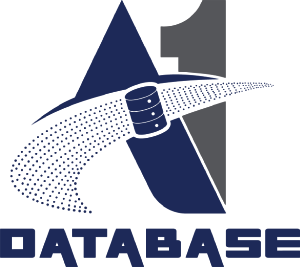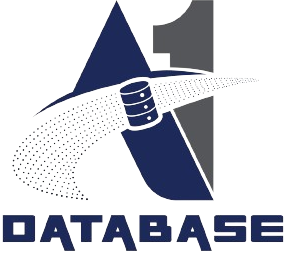- December 6, 2024
- by Admin
- Web Scraping
In the present digital-centric world, web scraping has become a vital instrument for businesses that seek to make decisions based on data. The grocery sector is no different. Retailers, competitors, and market analysts utilize web scraping to access important data points, including product listings, pricing trends, and store-specific insights. This data is crucial for enhancing operational efficiency, refining marketing strategies, and maintaining a competitive position. This article will discuss the significance of web scraping grocery data, highlighting three essential areas: product details, pricing insights, and store-level data from leading retailers.
Utilizing a Web Scraping Service for Grocery Store Location Data allows businesses to acquire geographical insights that are particularly beneficial for operational expansion or competitor performance analysis. Furthermore, firms that specialize in Grocery Store Location Data Scraping Services assist retailers in gathering and analysing data at the store level, which empowers them to enhance inventory distribution, monitor regional pricing differences, and customize their marketing strategies according to specific locations.
The Importance of Web Scraping in Grocery Retail
The landscape of grocery retail is increasingly characterized by dynamism, driven by shifting consumer expectations, competitive pressures, and technological advancements. Traditional data collection techniques, such as surveys and manual research, are inadequate for providing real-time, comprehensive insights. Automating the collection of grocery store location data through scraping facilitates access to accurate and timely information from multiple sources, empowering decision-makers to swiftly adapt to market changes.
Furthermore, grocery e-commerce platforms such as Walmart, Instacart, and Amazon Fresh possess large datasets that, when analysed, disclose critical trends and opportunities. This analysis is beneficial for retailers and suppliers who wish to align their strategies with consumer preferences and the dynamics of competitive pricing. By extracting data on supermarket store locations, businesses can obtain insights into geographical performance, allowing for improved store-level strategies that address local consumer demands.
Grocery Product Data Harvesting: Understanding the Range of Available Selections
At the heart of the grocery shopping experience is the product assortment. Grocery Delivery App Data Collection focuses on gathering detailed information about the items that retailers offer online. This data can include:
Product Names and Descriptions: Extracting Supermarket Price Data can capture product names, detailed descriptions, and specifications such as ingredients, nutritional information, and packaging sizes. This data is essential for companies involved in product comparison or competitive analysis.
Category and Subcategory Information: By scraping product categories and subcategories, businesses can better understand how a retailer structures its product offerings. This can reveal insights into the breadth of a retailer’s assortment and emerging product categories that may be gaining traction with consumers, made possible through a Web Scraping Grocery Prices Dataset.
Brand Information: Scraping product listings also allows businesses to track brand presence and popularity across retailers. For example, analysing the share of shelf space allocated to private label brands versus national brands provides insights into a retailer’s pricing and promotional strategies using a Grocery delivery App Data Scraper.
Product Availability: Monitoring which products are in or out of stock is a critical use case for grocery data scraping. Real-time product availability data can be used to optimize inventory management and anticipate potential shortages or surpluses. Furthermore, it allows retailers to gauge competitor stock levels and adjust their offerings accordingly through a Grocery delivery App data scraping Api.
New Product Launches: Scraping data on new product listings across multiple retailers provides insights into market trends and innovation. This is particularly useful for suppliers looking to stay ahead of the competition by identifying popular products early on or tracking how their new products are performing across various platforms.
Analysing Grocery Pricing Data for Strategic Insights
A Competitive Edge Pricing stands out as one of the most dynamic and essential elements within the grocery sector. Prices are subject to frequent changes driven by promotions, competitor strategies, supply chain issues, and shifts in consumer demand. Utilizing web scraping technology allows businesses to track real-time pricing information from leading grocery retailers, offering several significant benefits:
Monitoring Prices Across Retailers: By scraping pricing data from various retailers, businesses can assess how similar products are priced in the marketplace. This intelligence can inform pricing strategies, enhance competitiveness, and optimize profit margins. Retailers can swiftly respond to competitor price adjustments and refine their promotional efforts to attract price-sensitive consumers.
Implementing Dynamic Pricing Strategies: Access to real-time pricing data enables businesses to adopt dynamic pricing strategies. For example, if a competitor reduces the price of a specific item, a retailer can promptly adjust its pricing. This agility helps maintain market competitiveness while safeguarding profit margins.
Identifying Promotions and Discounts: Scraping promotional and discount data allows businesses to pinpoint current or forthcoming sales events. This capability is particularly beneficial for evaluating the frequency and magnitude of discounts, assisting retailers and suppliers in assessing the success of their promotional initiatives. Additionally, tracking promotional trends can yield insights into seasonal or event-driven price modifications.
Analysing Historical Pricing Trends: Web scraping tools can be set up to gather and archive historical pricing data, enabling businesses to examine long-term trends. This historical information is crucial for forecasting future pricing strategies, evaluating the effects of inflation, and anticipating market developments. Conducting Price Elasticity Analysis: By integrating pricing data with sales figures, businesses can perform price elasticity analysis to gauge consumer demand sensitivity.
Analysing Store-Level Insights Through Scraped Grocery Data
Grocery retailers typically operate multiple locations, each exhibiting unique dynamics influenced by local demand, competition, and supply chain logistics. The practice of web scraping can yield significant store-level insights by gathering data on:
Store Locations and Operating Hours: Collecting information regarding store locations, hours of operation, and available services enables businesses to evaluate a retailer’s geographical presence and operational tactics. This is particularly advantageous for competitors assessing potential expansion areas or companies providing location-based services.
Geographical Pricing Discrepancies: Prices can differ markedly across regions due to variations in local supply and demand, transportation expenses, and regional promotional tactics. Web scraping facilitates the monitoring of price variations across different geographical areas, offering valuable insights for retailers or suppliers functioning in diverse markets.
Inventory Availability and Replenishment Trends: By scraping data on product availability across various store locations, businesses can acquire insights into local inventory levels and replenishment trends. For example, certain stores may frequently experience stock shortages for popular items, indicating supply chain inefficiencies or heightened local demand. This information can be leveraged to enhance logistics and boost customer satisfaction.
Localized Marketing and Discounts: Retailers frequently implement location-specific promotions, particularly during events or holidays. Scraping data on these localized promotional efforts allows businesses to discern regional marketing strategies and comprehend how retailers engage specific customer segments.
Competitor Store Analysis: Examining store-level data from competitors can yield essential insights into their operational effectiveness. For instance, frequent stockouts or alterations in store hours may reveal logistical difficulties, while the opening of new stores could indicate an expansion strategy.
Scraping Data from Major Grocery Retailers for Data-Driven Decisions
Scraping grocery data from several major grocery retailers, including Walmart, Kroger, and Amazon Fresh, helps gather critical data for making informed decisions.
Walmart: As one of the largest grocery retailers in the world, Walmart is known for its wide range of products. Businesses can employ sophisticated data collection techniques to monitor competitor pricing, analyse product assortment trends, and optimize inventory management. Walmart’s expansive product catalogue and broad geographical reach make it a valuable data source for competitors and market analysts.
Kroger: Kroger is a leader in data analytics and enhancing the customer experience. By scraping data from its online platform and competitors, businesses can identify trends in consumer preferences, optimize pricing strategies, and improve product availability across their stores.
Amazon Fresh: Amazon Fresh is a digital-first grocery platform popular for delivery. Businesses can extensively use web scraping to monitor pricing and product trends in real-time. Knowing Amazon’s dynamic pricing strategies, businesses can adjust theirs based on competitor prices and demand fluctuations.
Instacart: Instacart partners with various grocery retailers, and its platform serves as a hub for scraping data on product availability, pricing, and promotions from multiple stores. This data is valuable for market analysts and competitors, providing insights into regional pricing trends and consumer preferences.
Tesco: In the UK, Tesco has extensive data on products, pricing, delivery, etc. Businesses can leverage data extraction processes to collect data on grocery items. This helps them refine their product offerings and pricing strategies to remain competitive in a highly saturated market.
The Evolution of Web Scraping in the Grocery Retail Sector
The significance of web scraping is set to increase as the grocery sector undergoes transformation. The growth of e-commerce grocery platforms, coupled with the rising consumer expectation for real-time and personalized shopping experiences, will heighten the necessity for precise and extensive data. Various emerging trends are anticipated to influence the future of web scraping within the grocery retail landscape.
- The Integration of Artificial Intelligence (AI) and Machine Learning (ML): The utilization of AI and ML technologies is set to significantly enhance the capabilities of web scraping. These advancements will enable businesses to discern patterns within extensive datasets, forecast future trends, and make more strategic decisions regarding pricing and product assortments.
- Insights from Voice-Enabled Shopping: With the rise of voice search technology, grocery retailers are likely to employ web scraping to examine voice-driven shopping inquiries. This analysis can yield valuable insights into consumer interactions with digital assistants, thereby guiding strategies to optimize voice search functionalities.
- Emphasis on Data Privacy: In light of the increasing implementation of stringent data privacy regulations by governments globally, businesses involved in web scraping must prioritize compliance. This shift will likely lead to the adoption of advanced data anonymization methods and a stronger focus on ethical data collection practices.
- Real-Time Personalization of Shopping Experiences: As consumer demand for personalized shopping experiences intensifies, web scraping will facilitate the provision of real-time, customized recommendations. By evaluating a customer’s purchase history, preferences, and browsing behaviour, retailers can present tailored product suggestions and promotional offers.
Conclusion
The Web Scraping Service for Grocery Store Location Data represents a transformative resource for retailers, suppliers, and market analysts aiming to gain a competitive advantage. By streamlining the acquisition of product, pricing, and store-specific information, organizations can access a vast array of insights that facilitate more informed decision-making. This service enables businesses to track product availability, refine pricing strategies, and analyse regional variations in in-store performance, thereby providing an exceptional opportunity to maintain a leading position in the dynamic grocery retail sector. As the industry progresses, web scraping will continue to be an essential instrument for leveraging data to influence the future of grocery shopping.
Experience superior web scraping and mobile application scraping solutions with A1 Database Data Scraping. Our talented team is skilled in extracting a variety of data sets, including retail store locations and more. Get in touch with us today to discover how our customized services can fulfil your specific project needs, delivering exceptional efficiency and reliability for all your data requirements.

